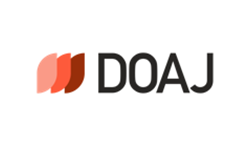УРЯДОВІ ЗАХОДИ ТА ЕКОНОМІЧНА ДІЯЛЬНІСТЬ ПІД ЧАС СПАЛАХУ COVID-19: ДЕЯКІ ПОПЕРЕДНІ КОРОТКОСТРОКОВІ ДОКАЗИ З ЄВРОПИ
Ключові слова:
COVID-19, європейські країни, державні заходи, оборот продажів, Інтернет-роздрібна торгівля.Анотація
Метою дослідження є надання доказів впливу заходів уряду для стримування впливу COVID-19 на торгівлю. Використовуючи щомісячні дані Євростату, вивчається взаємозв’язок між оборотом продажів та вжитими державними заходами. Пояснювальні змінні охоплюють три показники, що вимірюють відповідь уряду, а саме: індекс державної відповіді, індекс жорсткості, індекс стримування та охорони здоров’я та індекс економічної підтримки. Вони розраховані за допомогою узагальненої моделі найменших квадратів з гетероскедастичністю та автокореляцією. Згідно з результатами виявлено, що процентна зміна індексу дефляційного обороту роздрібного продажу продуктів харчування, напоїв та тютюну позитивно корелює з довірою споживачів та негативно корелює з обмежувальними урядовими заходами. Також визначено, що процентна зміна індексу дефляційного обороту роздрібного продажу через Інтернет позитивно корелює з жорсткістю державних заходів, що підтверджує зростання важливої ролі Інтернету як каналу торгівлі.
Класифікація за JEL: E65, F01, H11, L81, C22.
Посилання
Alam, K., & Mahal, A. (2014). Economic impacts of health shocks on households in low and middle income countries: a review of the literature. Globalization and health, 10(1), 1–18. https://doi.org/10.1186/1744-8603-10-21
Al-Awadhi, A. M., Alsaifi, K., Al-Awadhi, A., & Alhammadi, S. (2020). Death and contagious infectious diseases: Impact of the COVID-19 virus on stock market returns. Journal of Behavioral and Experimental Finance, 27, 100326. https://doi.org/10.1016/j.jbef.2020.100326
Ali, B. (2020). Impact of COVID-19 on consumer buying behavior toward online shopping in Iraq. Economic Studies Journal, 18(42), 267–80.
Ashraf, B.N. (2020). Economic impact of government interventions during the COVID-19 pandemic: International evidence from financial markets. Journal of Behavioral and Experimental Finance, 27, 100371. https://doi.org/10.1016/j.jbef.2020.100371
Baker, S., Bloom, N., Davis, S.J., Kost, K., Sammon, M., & Viratyosin, T. (2020). The unprecedented stock market reaction to COVID-19. The Review of Asset Pricing Studies, 10(4), 742–58. https://doi.org/10.1093/rapstu/raaa008
Baldwin, R. (2020, March 13). Keeping the lights on: Economic medicine for a medical shock. CEPR. https://voxeu.org/article/how-should-we-think-aboutcontaining-covid-19-economic-crisis
Baldwin, R., & Weder di Mauro, B. (Eds.). (2020). Economics in the time of COVID19. CERP Press. https://voxeu.org/system/files/epublication/COVID-19.pdf
Barro, R.J., Ursúa, J.F., & Weng, J. (2020). The coronavirus and the great influenza pandemic: Lessons from the «spanish flu» for the coronavirus’s potential effects on mortality and economic activity. National Bureau of Economic Research, no. w26866.
Barrot, J-N, Grassi, B., & Sauvagnat, J. (2020). Estimating the costs and benefits of mandated business closures in a pandemic. CEPR Discussion Paper, DP14757. https://ssrn.com/abstract=3603989
Beck, N., & Katz, J.N. (1995). What to do (and not to do) with time-series crosssection data. The American Political Science Review, 89(3), 634–647.
Bems, R., Johnson, R.C., & Yi, K-M. (2013). The Great Trade Collapse. Annual Review of Economics, 5(1), 375-400.
Beraha, I., & Đuričin, S. (2020). The impact of COVID-19 crisis on medium-sized enterprises in Serbia. Economic Analysis, 53(1), 14–27.
Biskanaki, F., Rallis, E., Andreou, E., Sfyri, E., Tertipi, N., & Kefala, V. (2020). Social‐economic impact of COVID‐19 pandemic on aesthetic centers in Greece. Journal of Cosmetic Dermatology, 19(9), 2165–2168. https://doi.org/10.1111/jocd.13517
Brinca, P., Duarte, J.B., & Faria-e-Castro, M. (2020). Measuring sectoral supply and demand shocks during COVID-19. Federal Reserve Bank of St. Louis Working Paper, 2020-011.
Carlsson-Szlezak, P., Reeves, M., & Swartz, P. (2020). Understanding the economic shock of Coronavirus. Harvard Business Review, 27. https://hbr.org/2020/03/understanding-the-economic-shock-of-coronavirus
Cheng, C., Barceló, J., Hartnett, A.S., Kubinec, R., & Messerschmidt, L. (2020). COVID-19 government response event dataset (CoronaNet v.1.0). Nature Human Behavior, 4(7), 756-768. https://doi.org/10.1038/s41562-020-0909-7
Correia, S., Luck, S., & Verner, E. (2020). Pandemics depress the economy, public health interventions do not: Evidence from the 1918 Flu. SSRN Electronic Journal. https://dx.doi.org/10.2139/ssrn.3561560
Crowley, M., & Luo, X. (2011). Understanding the Great Trade Collapse of 2008-09 and the subsequent trade recovery. Economic Perspectives, 35(2), 44.
Dannenberg, P., Fuchs, M., Riedler, T., & Wiedemann, C. (2020). Digital transition by COVID‐19 pandemic? The German food online retail.
Tijdschrift voor economische en sociale geografie, 111(3), 543–560.
Elmasseh, S., Hassanein, E.A. (2020). US consumer confidence responses to shocks: COVID19 scenarios and recovery under review: REHO special issue. https://doi.org/10.21203/rs.3.rs-41081/v1
Eurostat. (n.d.). Business and consumer surveys (source: DG ECFIN) (ei_bcs). Retrieved December 20, 2020, from https://ec.europa.eu/eurostat/cache/metadata/en/ei_bcs_esms.htm
European Commission. (n.d.). Document 52018DC0219. Retrieved December 20, 2020, from https://eur-lex.europa.eu/legal-content/EN/TXT/DOC/?uri=CELEX:52018DC0219&from=EN
Fan, V.Y., Jamison, D.T., & Summers, L.H. (2018). Pandemic risk: How large are the expected losses? Bulletin of the World Health Organization, 96(2), 129.
Fang, Y., Nie, Y., & Penny, M. (2020). Transmission dynamics of the COVID-19 outbreak and effectiveness of government interventions: A data-driven analysis. Journal of Medical Virology, 92(6), 645–659. https://doi.org/10.1002/jmv.25750
Giannakis, E., Hadjioannou, L., Jimenez, C., Papageorgiou, M., Karonias, A., & Petrou, A. (2020). Economic consequences of Coronavirus disease (COVID-19) on fisheries in the eastern Mediterranean (Cyprus). Sustainability, 12(22), 9406. https://doi.org/10.3390/su12229406
Golinelli, R., & Parigi, G. (2004). Consumer sentiment and economic activity: A cross country comparison. Journal of Business Cycle Measurement and Analysis, 2, 147–170.
Grima, S., Dalli-Gonzi, R., & Thalassinos, E.I. (2020). The impact of COVID-19 on Malta and its economy and sustainable strategies. SSRN Electronic Journal. https://doi.org/10.2139/ssrn.3644833
Guan, D., Wang, D., Hallegatte, S., Davis, S.J., Huo, J., Li, S., Bai, Y., Lei, T., Xue, Q., Coffman, D., Cheng, D., Chen, P., Liang, X., Xu, B., Lu, X., Wang, S., Hubacek, K., & Gong, P. (2020). Global supply-chain effects of COVID19 control measures. Nature Human Behavior, 4(6), 577–587.https://doi.org/10.1038/s41562-020-0896-8
Hale, T., Angrist, N., Cameron-Blake, E., Hallas, L., Kira, K., Majumdar, S., Petherick, A., Phillips, T., Tatlow, H., & Webster, S. (2020). Variation in government responses to COVID-19. BSG Working Paper Series, BSGWP-2020/032 Version 7.0. Retrieved October 7, 2020, from https://www.bsg.ox.ac.uk/sites/default/files/2020-09/BSG-WP-2020-032-v7.0.pdf
Hallegatte, S. (2008). An adaptive regional input-output model and its application to the assessment of the economic cost of Katrina. Risk Analysis, 28(3), 779–799.
Kamal, M.M. (2020). The triple-edged sword of COVID-19: Understanding the use of digital technologies and the impact of productive, disruptive, and destructive nature of the pandemic. Information Systems Management, 37(4), 310–317.
Karabag, S.F. (2020). An unprecedented global crisis! The global, regional, national, political, economic and commercial impact of the Coronavirus pandemic. Journal of Applied Economics and Business Research, 10(1), 1-6.
Kovačević, D. (2020). Economic impact of COVID-19 on the European tourism sector with special view on Croatian tourism. Modern Economy, 11, 1652-1670. https://doi.org/10.4236/me.2020.1110115
Kim, R.Y. (2020). The impact of COVID-19 on consumers: Preparing for digital sales. IEEE Engineering Management Review, 48(3), 212-8.
Koks, E.E., Carrera, L., Jonkeren, O., Aerts, J. C. J. H., Husby, T. G., Thissen, M., Standardi, G., & Mysiak, J. (2016). Regional disaster impact analysis: comparing input–output and computable general equilibrium models. Natural Hazard and Health Systems Sciences, 16, 1911–1924, https://doi.org/10.5194/nhess-16-1911-2016
Leka, B. (2020). An overview of the pandemic impact in the economy of Albania. Romanian Economic Journal, 23(78), 2–12.
Malgarini, M. (2011). Industrial production and confidence after the crisis: What’s going on? In Fifth Joint EU-OECD Workshop on Business and Consumer Opinion Surveys Brussels. OECD. https://www.oecd.org/sdd/leadingindicators/49016374.pdf
Okuyama, Y. (2014). Disaster and economic structural change: Case study on the 1995 Kobe earthquake. Economic System Research, 26(1), 98–117.
Okuyama, Y., & Santos, J.R. (2014). Disaster impact and input/output analysis. Economic System Research, 26(1), 1–12. https://doi.org/10.1080/09535314.2013.871505
Papandreou, C., Arija, V., Aretouli, E., Tsilidis, K. K., & Bulló, M. (2020). Comparing eating behaviours, and symptoms of depression and anxiety between Spain and Greece during the COVID-19 outbreak: Cross-sectional analysis of two different confinement strategies. European eating disorders review: the journal of the Eating Disorders Association, 28(6), 836–846. https://doi.org/10.1002/erv.2772
Papanikos, G.T. (2020). The impact of the Covid-19 pandemic on Greek tourism. Athens Journal of Tourism, 7(2), 87–100.
Pourhejazy, P. (2020). Destruction Decisions for Managing Excess Inventory in ECommerce Logistics. Sustainability, 12(20), 8365.
Rose, A., & Wei, D. (2013). Estimating the economic consequences of a port shutdown: the special role of resilience. Economic System Research, 25(2), 212–232.
Rowan, N.J., & Laffey, J.G. (2020). Challenges and solutions for addressing critical shortage of supply chain for personal and protective equipment (PPE) arising from Coronavirus disease (COVID19) pandemic – case study from the Republic of Ireland. Science of the Total Environment, 725,138532.
Sebastiani, G., Massa, M., & Riboli, E. (2020). Covid-19 epidemic in Italy: evolution, projections and impact of government measures. European Journal of Epidemiology, 35(4), 341–345. https://doi.org/10.1007/s10654-020-00631-6
Sekulic, D., Blazevic, M., Gilic, B., Kvesic, I., & Zenic, N. (2020). Prospective analysis of levels and correlates of physical activity during COVID-19 pandemic and imposed rules of social distancing; gender specific study among adolescents from southern Croatia. Sustainability, 12(10), 4072. https://doi.org/10.3390/su12104072
StataCorp. (2019). Stata Statistical Software: Release 16. StataCorp LLC.
Terziyska, I., & Dogramadjieva, E. (2021, January). Should I stay or should I go? Global COVID-19 pandemic influence on travel intentions of Bulgarian residents. In SHS Web of Conferences (Vol. 92, No. 010, p. 2021). EDP Sciences.
Tisdell, C.A. (2020). Economic, social and political issues raised by the COVID-19 pandemic. Economic Analysis and Policy, 68, 17–28. https://doi.org/10.1016/j.eap.2020.08.002
Throop, A.W. (1992). Consumer sentiment: Its causes and effects. Federal Reserve Bank of San Francisco, Economic Review, 1, 35–59.
Turnšek, M., Brumen, B., Rangus, M., Gorenak, M., Mekinc, J., & Lešnik Štuhec,T. (2020). Perceived threat of COVID-19 and future travel Aavoidance: Results from an early convenient sample in Slovenia. Academia Turistica, 13(1), 3–19.
van Dijck, J., & Alinea, D. (2020). Social media and trust in scientific expertise: Debating the Covid-19 pandemic in the Netherlands. Social Media + Society, 6(4), https://doi.org/10.1177/2056305120981057
Xia, Y., Guan, D., Steenge, A.E., Dietzenbacher, E., Meng, J., & Mendoza Tinoco, D. (2019). Assessing the economic impacts of IT service shutdown during the York flood of 2015 in the UK, Proceedings of the Royal Society A Mathematical Physical and Engineering Sciences 475 (2224). https://doi.org/10.1098/rspa.2018.0871
Wagstaff, A. (2005). The Economic Consequences of Health Shocks. Policy Research Working Paper, 3644. World Bank. https://openknowledge.worldbank.org/handle/10986/8307.
World Bank (2020). Global Economic Prospects, June 2020. The World Bank. https://doi.org/10.1596/978-1-4648-1553-9.
Yabe, N., Hanibuchi, T., Adachi, H. M., Nagata, S., & Nakaya, T. (2020). Relationship between Internet use and leaving home during the first wave of the COVID-19 outbreak in Japan. Research Square. https://doi.org/10.21203/rs.3.rs-108313/v1.
Zhang, D., Hu, M., & Ji, Q. (2020). Financial markets under the global pandemic of COVID-19. Finance Research Letters, 36, 101528. https://doi.org/10.1016/j.frl.2020.101528
##submission.downloads##
Опубліковано
Як цитувати
Номер
Розділ
Ліцензія
Автори, які публікуються у цьому журналі, погоджуються з наступними умовами:
- Автори залишають за собою право на авторство своєї роботи та передають журналу право першої публікації цієї роботи на умовах ліцензії Creative Commons Attribution License, котра дозволяє іншим особам вільно розповсюджувати опубліковану роботу з обов'язковим посиланням на авторів оригінальної роботи та першу публікацію роботи у цьому журналі.
- Автори мають право укладати самостійні додаткові угоди щодо неексклюзивного розповсюдження роботи у тому вигляді, в якому вона була опублікована цим журналом (наприклад, розміщувати роботу в електронному сховищі установи або публікувати у складі монографії), за умови збереження посилання на першу публікацію роботи у цьому журналі.
- Політика журналу дозволяє і заохочує розміщення авторами в мережі Інтернет (наприклад, у сховищах установ або на особистих веб-сайтах) рукопису роботи, як до подання цього рукопису до редакції, так і під час його редакційного опрацювання, оскільки це сприяє виникненню продуктивної наукової дискусії та позитивно позначається на оперативності та динаміці цитування опублікованої роботи (див. The Effect of Open Access).








